Florida coast battered by Hurricane Hermine
- Published
Aftermath of Hurricane Hermine
The first hurricane to hit Florida in a decade has killed one person, caused severe damage and knocked out power to nearly 300,000 homes and businesses.
Now downgraded to a tropical storm, it is pushing north-eastward. Emergencies have been declared in Georgia, North Carolina, Maryland and Virginia.
A state of emergency remains in effect for most of Florida.
There are concerns over stagnant water in the state, which has been battling the mosquito-born Zika virus.
Gusts of 80mph (130km/h) caused storm surges that flooded part of the Florida coast.
In the town of Cedar Key, waters rose more than 9.5ft (2.9 metres), among the highest surges ever seen, according to the National Weather Service.
A 56-year-old man died when a tree fell on the tent he was sleeping in, local media, external reported.
After making landfall early on Friday, Hermine swept through Florida and Georgia.
Having weakened to a tropical storm, it entered South Carolina, where local officials have reported flooded roads, fallen trees and power outages.
But the National Hurricane Center predicted it would regain hurricane strength after emerging into the Atlantic Ocean, and a tropical storm warning was issued for parts of New Jersey, Connecticut and New York City.
It is expected the storm conditions will reach New York on Sunday.
The US Coast Guard also warned boaters and swimmers along the New York and New Jersey coasts to use caution in what is expected to be rough surf and hazardous rip currents this weekend.
Zika fears
There are also fears that the stagnant water caused by the storm surge in Florida could provide a breeding ground for mosquitoes.
There have been 47 cases of Zika in people believed to have contracted the virus through local mosquitoes, according to the Florida Department of Health.
"It is incredibly important that everyone does their part to combat the Zika virus by dumping standing water, no matter how small," Florida Governor Rick Scott told a news conference on Friday.

Hurrican Hermine caused a 9.5ft (2.9-metre) storm surge that brought whatever was in its way onto land
Police in Taylor County, Florida, that has a population of more than 20,000, said the storm had inflicted "severe damage, external".
In the state capital Tallahassee, at least 70,000 homes were without power at one point, affecting 60% of people in the region.

Hurricanes in the US
While Florida is prone to storms and storm surges, it has not seen a hurricane in close to 4,000 days
The last hurricane to strike Florida was Wilma , externalin October 2005, causing five deaths and an estimated $23bn (£17bn) of damage
Hurricane Katrina, external hit Louisiana in the same year, killing nearly 2,000 people and displaced one million
In fact, Hermine is the first hurricane to make landfall in the US since Arthur in July 2014 - no hurricanes touched down in 2010, 2013 or 2015

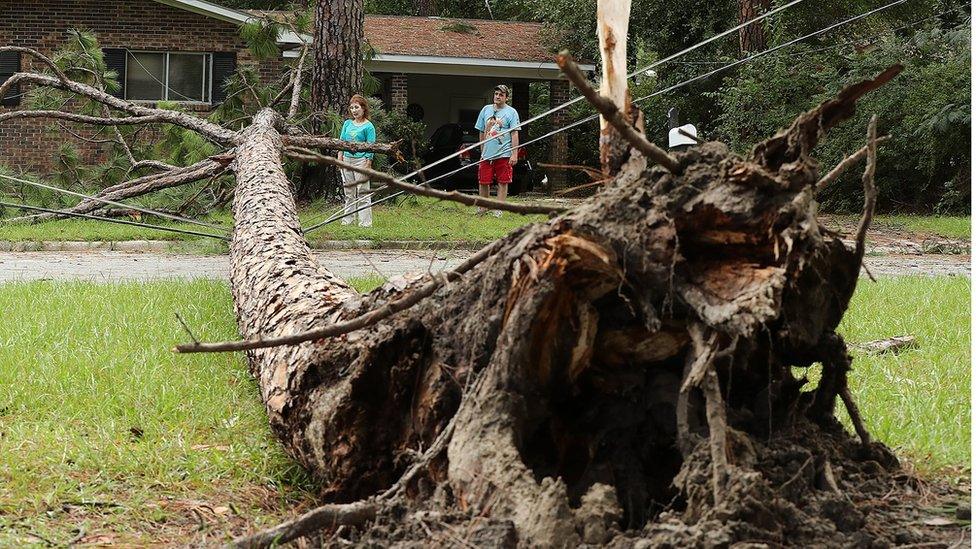
Georgia was spared the worst, but many trees were uprooted and thousands of people were left without electricity
In Georgia, Governor Nathan Deal also declared a state of emergency, for 56 counties, but the state was spared the havoc it had expected.
"We're having a bit of a sigh of relief," said Jim Butterworth, director of the Georgia Emergency Management Agency.
But 107,000 customers were reported to be without power across the state as crews worked to repair damage.
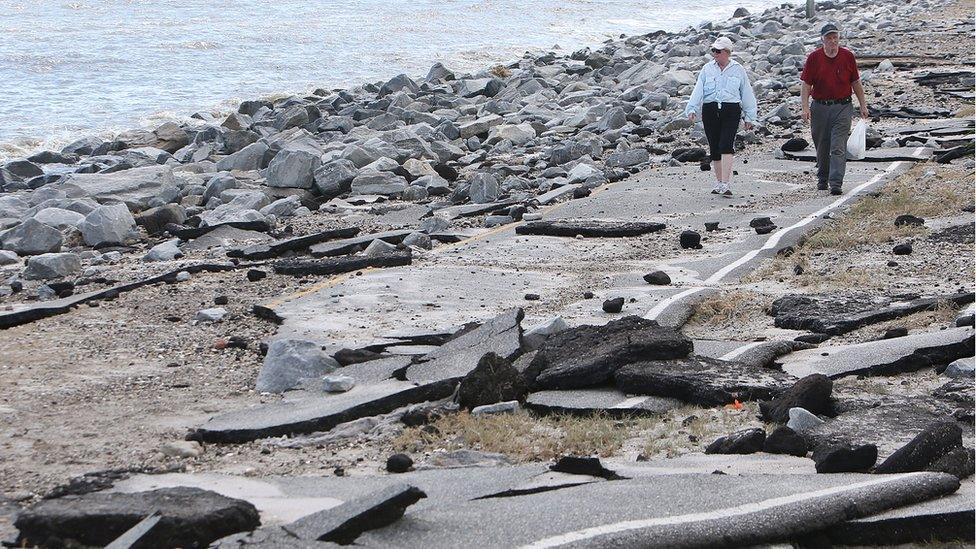
Sea water during the hurricane ripped up huge stretches of road in Alligator Point, Florida
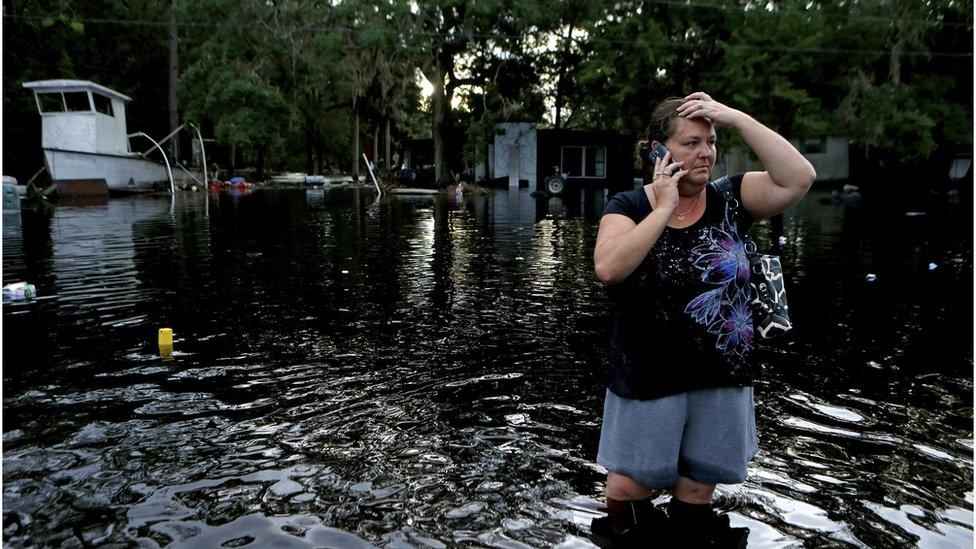
Many places are suffering from very high water resulting from the storm surge, like here in Steinhachee, Florida
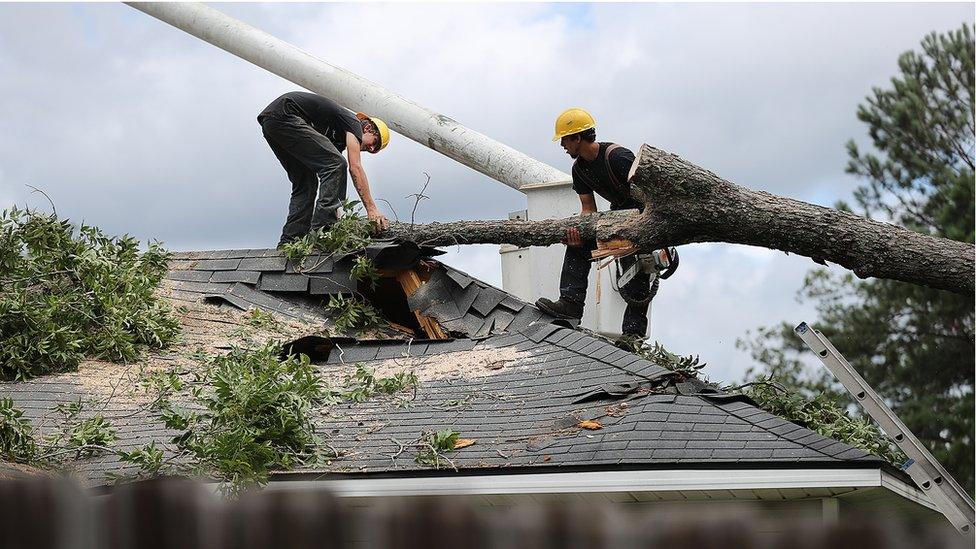
Much of the damage to property came from fallen trees


Hurricane scales
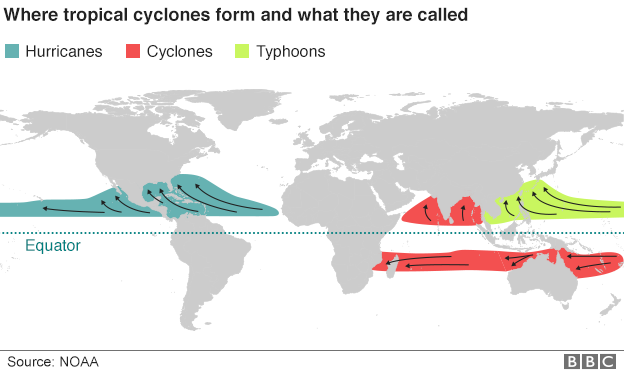
Category one: sustained winds of 74-95mph (119-153 km/h); some damage and power cuts
Category two: winds of 96-110mph (154-177 km/h); extensive damage
Category three: winds of 111-129mph (178-208 km/h); well-built homes suffer major damage
Category four: winds of 130-156mph (209-251 km/h); severe damage to well-built homes, most trees snapped or uprooted
Category five: winds of 157 mph (252 km/h) or higher; high percentage of homes destroyed, area uninhabitable for weeks or months
Source: NOAA

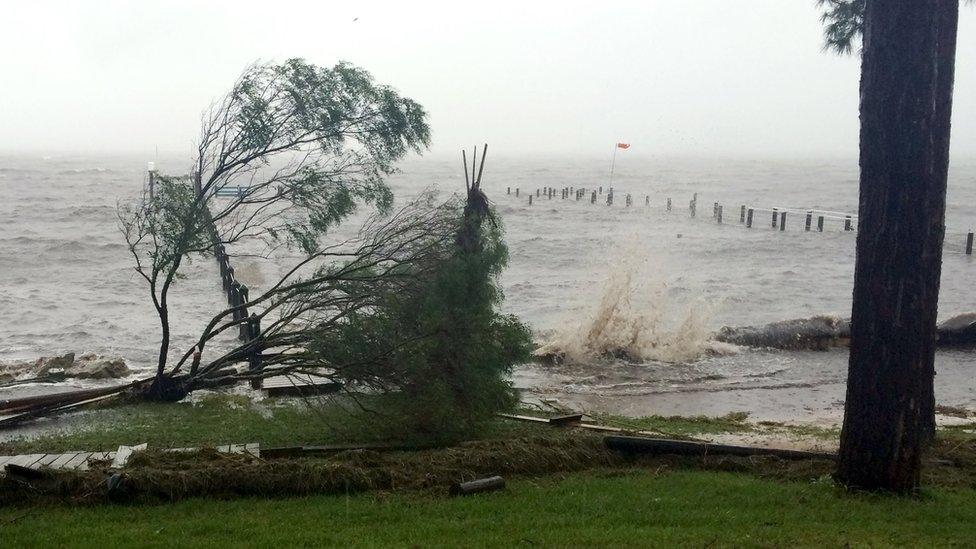
Trees were brought down in Carabelle even before the worst of the winds hit